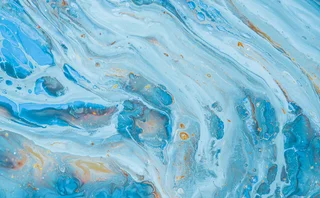July 2018: RPA Success: Keep It Simple

I remember a conversation I had with a capital markets CEO back in 2002 where we discussed the carnage that unfolded during the bursting of the dot-com bubble. While it would be unfair to generalize and describe the large numbers of firms that went to the wall from the late 1990s to 2001 as possessing questionable business models cloaked in a thin veneer of credibility by way of eye-catching websites, what isn’t up for debate is the fact that for the first time in history the automation of business processes made possible by the advent of the internet meant that firms were, if anything, more vulnerable than ever before. The upshot was that the automation of bad business processes simply meant that they went out of business faster than they might have in the past.
To a Lean evangelist, that scenario would be welcomed and filed under the “fail fast” mantra, although it’s unlikely that anyone who lost their business or their job during that time would be quite so sanguine and philosophical.
The bursting of the dot-com bubble didn’t bring to an end firms looking to automate certain parts of the business by way of the internet. In fact, that was pretty much the starting point in what has turned out to be an incremental, inexorable push. But it continues to serve as a reminder of what can go wrong—and especially how quickly things can go wrong—if the fundamentals of the business aren’t sound.
Which brings me to Hamad Ali’s robotic process automation (RPA) feature in this month’s issue of Waters. There is little doubt that RPA holds the key to automating large numbers of business processes across the capital markets, the primary benefits being the two measurables that all firms look to manage: saving time and cutting costs. But when it comes to the practicalities of RPA, the old adage “junk in, junk out” is especially pertinent. As with the dot-com fiasco, automating bad processes, no matter how sophisticated the automating technology might be, will almost certainly lead to failure.
The key to successfully applying RPA to enhance existing parts of the business is simplicity. Processes need to be well defined, intimately understood and relatively simple to automate. That said, there are still some in the industry underwhelmed by their RPA experiences to date. Matthew Davey, a managing director at Societe Generale Securities Services, is one such dissenting voice. “We’ve been a bit disillusioned with that experience,” he said, referring to the bank’s use of RPA technology, speaking at last year’s Sibos conference held in October 2017 in Toronto. According to Davey, SocGen uses RPA to underpin its reconciliation and report-generation processes, which he says are relatively simple functions, and therefore well-suited to the application of RPA technology. “If you try and apply it to a complex process then that becomes very difficult,” he warns.
Only users who have a paid subscription or are part of a corporate subscription are able to print or copy content.
To access these options, along with all other subscription benefits, please contact info@waterstechnology.com or view our subscription options here: https://subscriptions.waterstechnology.com/subscribe
You are currently unable to print this content. Please contact info@waterstechnology.com to find out more.
You are currently unable to copy this content. Please contact info@waterstechnology.com to find out more.
Copyright Infopro Digital Limited. All rights reserved.
As outlined in our terms and conditions, https://www.infopro-digital.com/terms-and-conditions/subscriptions/ (point 2.4), printing is limited to a single copy.
If you would like to purchase additional rights please email info@waterstechnology.com
Copyright Infopro Digital Limited. All rights reserved.
You may share this content using our article tools. As outlined in our terms and conditions, https://www.infopro-digital.com/terms-and-conditions/subscriptions/ (clause 2.4), an Authorised User may only make one copy of the materials for their own personal use. You must also comply with the restrictions in clause 2.5.
If you would like to purchase additional rights please email info@waterstechnology.com
More on Emerging Technologies
AI enthusiasts are running before they can walk
The IMD Wrap: As firms race to implement generative and agentic AI, having solid data foundations is crucial, but Wei-Shen wonders how many have put those foundations in.
Buy-side data heads push being on ‘right side’ of GenAI
Data heads at Man Group and Systematica Investments explain how GenAI has transformed the quant research process.
Jump Trading spinoff Pyth enters institutional market data
The data oracle has introduced Pyth Pro as it seeks to compete with the traditional players in market data more directly.
Treasury market urged to beef up operational resilience plans
NY Fed panel warns about impact of AI and reliance on critical third parties.
Waters Wavelength Ep. 339: Northern Trust Asset Management’s Jan Rohof
This week, Jan Rohof from Northern Trust Asset Management joins to discuss how asset managers and quants get more context from data.
EY and Microsoft partner to bring agentic AI to risk management
The two firms are part of a deal to bring agentic AI processes to core operations like lending, servicing and risk, starting at Eurobank.
T. Rowe taps Genesis, Cusip lawsuit, FanDuel-CME tie-up, and more
The Waters Cooler: Tokenization and private markets, EuroCTP-BMLL, StateStreet-PriceStats, and more.
Tokenization & Private Markets: Where mixed data finds a needed partner?
Waters Wrap: Reading the tea leaves, Anthony predicts BlackRock’s Preqin deal, Securitize’s IPO, and numerous public comments from industry leaders are just the tip of the iceberg.








